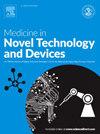Myoelectric signal and machine learning computing in gait pattern recognition for flat fall prediction
Q3 Medicine
引用次数: 0
Abstract
Abnormal gaits including pelvic obliquity gait and knee hyperextension gait are common clinical symptoms related to flat-ground fall among elder adults. This study aimed to determine the feasibility of using lower limb myoelectrical signals (electromyographic signals, EMG) for gait pattern recognition and to identify the optimal machine learning (ML) algorithms for EMG signal processing. Seven healthy subjects were recruited with their EMG signals collected from eight muscles of the lower limbs during walking with normal and abnormal gaits. Four basic ML algorithms including support vector machine (SVM), K-nearest neighbor (kNN), decision tree (DT), and naive Bayes (NB), and five deep learning models including convolutional neural network (CNN), long-short term memory (LSTM), bidirectional long short-term memory (BiLSTM), and CNN-BiLSTM were used to process the EMG signals recorded under different gaits. Statistical analysis was performed to compare the accuracy of individual ML algorithms in discriminating gait patterns. The overall accuracy was 95.78 % for SVM, 95.09 % for CNN-LSTM, and 96.28 % for CNN-BiLSTM, respectively. The overall accuracy was 90.25 % for DT, 92.62 % for kNN, 91.27 % for NB, and 90.34 % for CNN, respectively. The accuracy was 67.39 % for LSTM and 74.75 % for BiLSTM, respectively. Most ML algorithms in this study had an accuracy greater than 90 % in EMG-based abnormal gait pattern recognition except for LSTM and BiLSTM. This study provides novel technology for evaluation of gait pattern recognition related to flat ground fall.
肌电信号和机器学习计算在预测平地摔倒的步态模式识别中的应用
骨盆偏斜步态和膝关节过伸步态等异常步态是老年人平地跌倒的常见临床症状。本研究旨在确定使用下肢肌电信号(肌电信号,EMG)进行步态模式识别的可行性,并确定用于 EMG 信号处理的最佳机器学习(ML)算法。研究人员招募了七名健康受试者,采集了他们在正常和异常步态下行走时下肢八块肌肉的肌电信号。研究人员使用支持向量机(SVM)、K-近邻(kNN)、决策树(DT)和天真贝叶斯(NB)等四种基本 ML 算法,以及卷积神经网络(CNN)、长短期记忆(LSTM)、双向长短期记忆(BiLSTM)和 CNN-BiLSTM 等五种深度学习模型来处理不同步态下记录的肌电信号。通过统计分析,比较了各 ML 算法在辨别步态模式方面的准确性。SVM 的总体准确率为 95.78%,CNN-LSTM 为 95.09%,CNN-BiLSTM 为 96.28%。DT 的总体准确率为 90.25%,kNN 为 92.62%,NB 为 91.27%,CNN 为 90.34%。LSTM 和 BiLSTM 的准确率分别为 67.39 % 和 74.75 %。在基于肌电图的异常步态模式识别中,除 LSTM 和 BiLSTM 外,大多数 ML 算法的准确率都高于 90%。这项研究为评估与平地摔倒相关的步态模式识别提供了新技术。
本文章由计算机程序翻译,如有差异,请以英文原文为准。
求助全文
约1分钟内获得全文
求助全文
来源期刊

Medicine in Novel Technology and Devices
Medicine-Medicine (miscellaneous)
CiteScore
3.00
自引率
0.00%
发文量
74
审稿时长
64 days
 求助内容:
求助内容: 应助结果提醒方式:
应助结果提醒方式:


